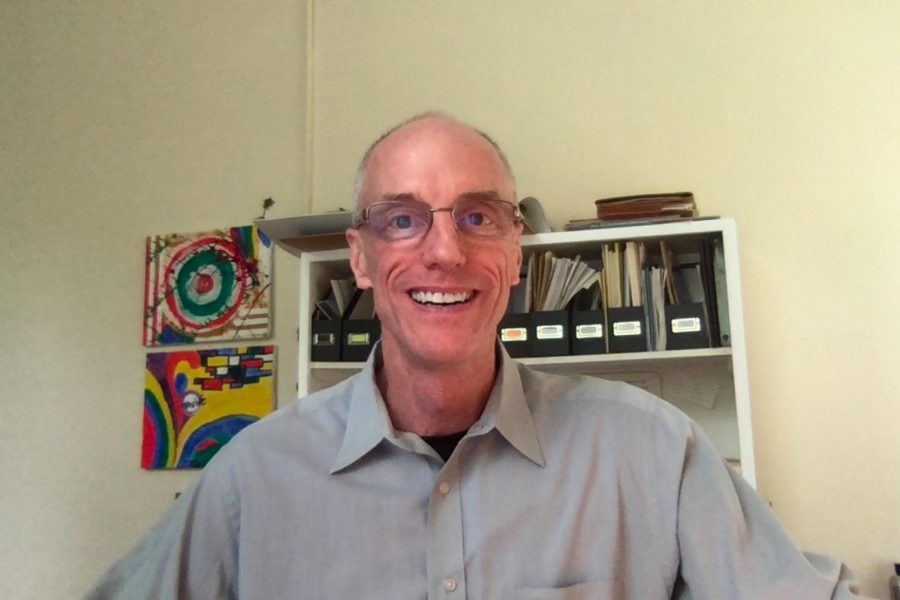Beyond the classroom: applied learning at Vermont State University
David McGough
As the VSCS moves forward with its transformation into Vermont State University, the academic opportunities available to students are being expanded. One such example which could see expansion is the area of applied learning.
Applied learning is a term which broadly encompasses many types of non-traditional learning methods, specifically those which allow students to use their knowledge outside of the classroom setting.
David McGough is an education professor at NVU-Johnson, and he has been utilizing applied learning in his teaching for around 20 years. “The trend in higher education across the globe is towards applied learning,” McGough said of recent efforts offering more chances for applied learning at NVU.
“Think of things like projects, field trips, practicum, internships, co-ops, apprenticeships, clerkships, residences, and fellowships,” McGough said. “These are all things that are done in higher education as ways to engage students in learning experiences that are particularly enriching and in ways that are additive to the experience.”
McGough said the education major at Johnson, as well as most others across the country, utilizes a form of applied learning in the form of student teaching. Hannah Miller, chair of NVU-Johnson’s education department, described the NVU-Johnson model.
For the first year of their major, education students “have courses where we just talk about theory and knowledge,” Miller said, adding that the goal is to “give people a chance to talk about what the experience is going to be like before they go into the field.”
During their second and third years, students take multiple practicum courses centered around course planning and design. These begin as creating a single lesson plan, but eventually involve preparing teach a whole unit.
“By the time they get into student teaching, they’ve had a lot of experience studying learning theory and how people learn,” Miller said. “They’ve had a lot of experience preparing curriculum and instruction. When they get to student teaching, it doesn’t feel brand new.”
While applied learning is not a new concept at NVU or across the nation, the hope is to see it built upon and made more readily available to students, with upcoming transformation providing an opportunity to integrate it more widely and directly.
NVU-Johnson Director of Career Development Beth Walsh said she hopes applied learning opportunities become a much more prominent part of the VSCS moving forward. While she doesn’t directly oversee internships, she encourages students to take as many of them as possible for their long list of benefits.
“It’s an academic endeavor,” she said. “It’s not just working at a site, it’s learning too… It’s a great experience for students. Sometimes they learn what they don’t want to do, but more often, they feel validated and encouraged and a little bit more confident.
“It’s great for the employer too, because if they’ve been looking for good employees, this is a way for them to try out student. There’s no commitment at the end, but a lot of our students are offered jobs at the end of their internship.”
Walsh said that in addition to hands-on learning and part-time pay, having a healthy list of internships can be a huge boon to a recent graduate’s resume.
“When you’re a college student, using these four years to volunteer on an interesting project or go on an alternative break trip or join a club on campus–all of these things are building skills,” Walsh said, “and if all that we do is go to class and work in the same job we’ve worked in through high school, we are missing out.”
Other universities have been emphasizing applied learning to great effect. The State University of New York defines applied learning as “an educational approach whereby students learn by engaging in direct application of skills, theories and models.”
Their Potsdam campus has been home to the Lougheed Center for Applied Learning since 2015. Over its few years of existence, the service has gathered and provided a breadth of internships, fellowships, study abroad and research opportunities for students to earn credit outside of the classroom.
The state-wide university system is also home to SUNY Works, a program which “engages students in a structured education program that blends classroom studies with experiential learning in a field directly related to the student’s academic and career goals,” according to its website.
Students will work for a company while attending school, earning monetary compensation for their work as well as academic credit for the lessons they take away from the real-world experience.
Vincenzo Favoroso is the Coordinator of Partner Engagement and Workforce Development at NVU-Lyndon, and he was hired recently to begin researching opportunities for the Learning Working Community–a new program at NVU which will operate similarly to SUNY Works.
“By giving students experiential learning, or learning outside the classroom, it lowers the cost of education… while simultaneously allowing them to apply what they learned in the classroom,” Favoroso said.
Favoroso said he is currently in the process of reaching out to community companies and organizations in an effort to start building connections for the Learning Working Community.
As part of this initiative, local organizations would hire students to help supplement their work force, while also providing students with experiential learning and a chance to bring their classroom education into the real world.
“Another thing we want to do is not only give these students opportunities, but we want to partner with these organizations to see what we can do as an educational institution…” he said. “It’s not just about giving the students the opportunities; it’s about building that relationship with these organizations.”
By partnering with local organizations, the VSCS could boost the economy and workforce of its several campus towns and help reduce the rising costs of public higher education in Vermont.
As the system moves closer to merging into Vermont State University, providing high-quality and affordable education is paramount to its success. “Applied learning means taking what we’re learning and using it in a way so that it becomes a permanent part of our knowledge and skills,” Miller said.
To further illustrate the tenets of applied learning, McGough described a simple metaphor–one which centers itself around blowing up a balloon.
“If you sit in a room and exhale, think about what happens to that air,” he said. “It contributes to the world in a diffuse manner. This is like book learning–when you learn something about math, and you say to yourself, ‘I’m not sure why I’m learning this.’ It’s out there in the world, and someday you might see a math problem or biology problem that you might have to recall.
“Applied learning is like blowing up a balloon. It’s performative, and it’s participatory, because it has an audience. It’s purposeful, because you have to put an individual kind of effort into it. Some people will have a harder time blowing up a balloon than others, so it’s personal…
“In traditional higher education, agency is in the instructor. In applied higher education, agency is in the learner. So, blowing up a balloon is participatory, performative, purposeful and personalized, and those are the characteristics of applied learning.”

Senior, Creative Writing
From Fletcher, VT
Spring 2020-Present
"Call me mommy and I'll bring you blankets and hold you while you cry."




